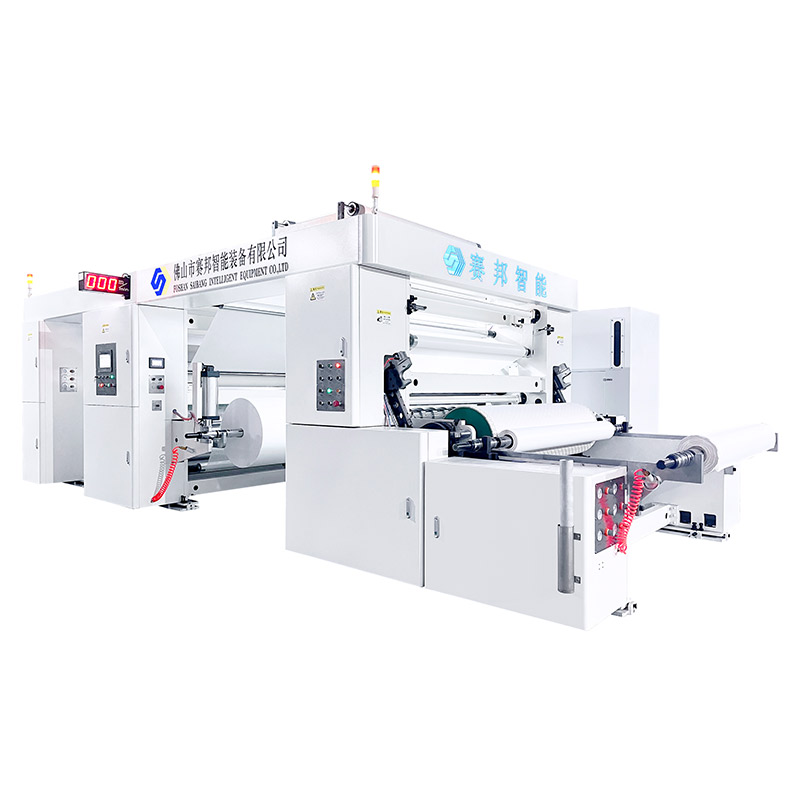What Is The Purpose Of Lamination?
Lamination is a process that bonds two or more layers of material together to enhance their strength, durability, and appearance. It is a key step in industries such as packaging, printing, nonwoven fabric production, medical materials, and industrial textiles. By creating a composite structure through heat, pressure, or ultrasonic energy, lamination provides materials with improved performance, protection, and functionality.
At SAIBANG, we specialize in high-quality Laminating Machines that combine advanced mechanical precision with intelligent control systems. Our equipment delivers stable, efficient, and customizable lamination solutions for applications ranging from flexible packaging to hygiene and medical products.
This article explains what lamination is, why it is important, and how it benefits industrial manufacturing—especially when using SAIBANG laminating machines.
1. What Is Lamination?
Lamination is the process of fusing two or more layers of material together using heat, adhesive, or ultrasonic bonding to create a single, composite structure. The goal is to enhance material properties such as strength, waterproofing, and chemical resistance while maintaining flexibility and aesthetics.
A) How the Lamination Process Works
Material Feeding: Two or more substrates (such as film, fabric, or paper) are fed through the laminating machine.
Application of Heat or Ultrasonic Energy: Heat rollers or ultrasonic systems activate bonding agents or melt the surface layers.
Pressure Bonding: The materials are pressed together evenly to form a stable and uniform bond.
Cooling and Rewinding: The laminated material is cooled and rewound for further use or cutting.
| Lamination Type | Bonding Method | Typical Application |
|---|---|---|
| Thermal Lamination | Uses heat and pressure to fuse layers | Plastic film + paper, decorative laminates |
| Adhesive Lamination | Applies liquid or dry adhesive between layers | Food packaging, medical pouches |
| Ultrasonic Lamination | Uses high-frequency vibrations to bond materials | Nonwoven fabrics, hygiene products |
B) Typical Materials Used
Plastic films: PET, BOPP, PVC, PE
Nonwoven fabrics: Spunbond, melt-blown, hot air nonwoven
Paper: Coated, kraft, or art paper
Foil or fabric: For insulation and decorative applications
2. Why Lamination Is Important
Lamination provides multiple performance and functional advantages that are crucial for both industrial and consumer products. It not only strengthens the base material but also gives it new properties that make it suitable for demanding environments.
A) Protection and Durability
Moisture Resistance: Lamination protects materials from humidity, water, and vapor penetration.
Abrasion Resistance: Laminated surfaces resist scratches, tearing, and mechanical wear.
Chemical Resistance: Provides protection against solvents, oils, and cleaning agents.
UV Protection: Reduces color fading or damage from prolonged sunlight exposure.
For example, in packaging, lamination keeps printed designs intact and prevents damage during storage or transportation. In nonwoven fabrics, it extends product lifespan even in medical and hygiene uses.
B) Enhanced Appearance and Surface Finish
Lamination can transform the look and feel of a material:
Adds glossy, matte, or embossed textures for aesthetic appeal.
Enhances color depth and brightness for printed materials.
Enables 3D decorative patterns in textile and film lamination.
At SAIBANG, our laminating machines allow manufacturers to switch between finishes easily, producing both high-gloss protective films and matte anti-reflective coatings as needed.
C) Improved Mechanical Strength
The lamination process creates composite materials that are stronger and more stable than individual layers.
Laminated paper becomes tear-resistant.
Nonwoven composites gain tensile strength and softness simultaneously.
Films maintain flexibility while increasing impact resistance.
| Benefit | Description | Example |
|---|---|---|
| Increased tensile strength | Combines multiple layers to prevent breakage | Medical gowns, wipes |
| Thermal stability | Keeps structure under heat exposure | Industrial insulation |
| Dimensional consistency | Prevents shrinkage and warping | Printed packaging films |
D) Hygiene and Barrier Performance
In medical, hygiene, and food industries, lamination provides critical barrier properties:
Blocks bacteria and particles from penetrating.
Ensures sterile protection in medical fabrics and gowns.
Provides airtight sealing in packaging for freshness retention.
3. Industrial Applications of Lamination
The versatility of lamination makes it indispensable across a wide range of industries. Each sector benefits from the combination of durability, protection, and visual enhancement that lamination offers.
A) Packaging Industry
Laminated films are essential for food, beverage, and pharmaceutical packaging.
Provides oxygen and moisture barriers.
Extends shelf life and maintains freshness.
Creates attractive, printable surfaces for branding.
B) Medical and Hygiene Industry
Laminated nonwoven materials are used to produce:
Surgical gowns, masks, drapes, and caps.
Protective clothing with breathable yet waterproof layers.
Sanitary products such as diapers and napkins.
Sayatech’s ultrasonic laminating machines achieve seamless bonding without glue or heat, maintaining comfort and hygiene.
C) Printing and Graphic Industry
Lamination enhances the presentation of printed materials:
Protects book covers, brochures, and labels from wear and moisture.
Adds a glossy or matte coating for professional finish.
Prevents color fading and extends product lifespan.
D) Textile and Automotive Applications
Laminating machines are widely used for fabric reinforcement and composite production:
Automotive interiors (door panels, headliners).
Upholstery and industrial textiles.
Functional clothing and waterproof outerwear.
| Industry | Typical Laminated Product | Function |
|---|---|---|
| Packaging | Food pouches, sachets | Moisture barrier, strength |
| Medical | Gowns, masks, drapes | Hygiene and protection |
| Printing | Posters, labels | Surface protection, appearance |
| Automotive | Interior fabric | Comfort, durability |
| Construction | Insulation film | Thermal barrier |
4. Summary
The purpose of lamination is to combine materials into a single structure that is stronger, more durable, and more functional. It serves both protective and aesthetic roles—safeguarding materials from moisture, abrasion, and heat while enhancing their appearance and usability.
Using SAIBANG laminating machines, manufacturers can:
Achieve high-speed, precise lamination for diverse materials.
Customize bonding methods (thermal, adhesive, ultrasonic) for specific products.
Maintain stable production quality with intelligent automation and tension control.
Reduce waste and energy consumption for sustainable operations.
In every industry—from food packaging to medical hygiene—lamination is the bridge between function and performance, ensuring that modern materials meet both practical and aesthetic demands.
Previous:



